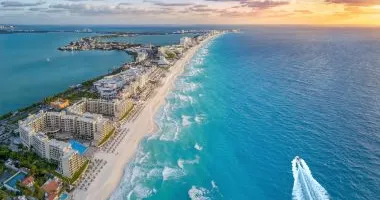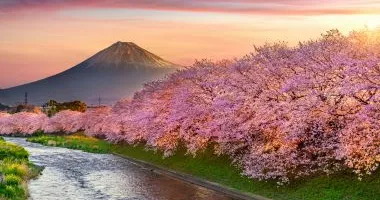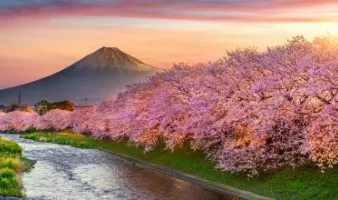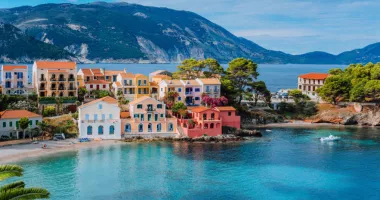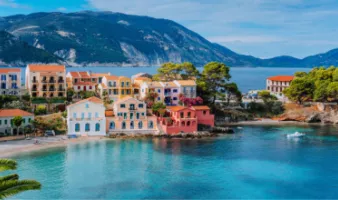What to do in Canada: your essential Canada travel guide

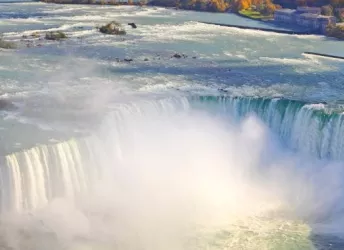
Canada is a country steeped in captivating history, jaw-dropping natural beauty, and compelling culture. From the thunderous roar of Niagara Falls to the ethereal glow of the Northern Lights in Yukon, every corner of this enormous nation is filled with wonder.
Before you traverse the magnificent Rocky Mountains in Alberta, explore the charming French-speaking cities of Quebec, or stand on the easternmost point of North America in Newfoundland, check out our Canada travel guide. It’ll help you plan a trip with ease, so you know what to do in Canada and where to stay, so you don’t waste a minute of your vacation.
“Canada is a popular travel destination for Americans—and not only because we share a border. There is so much for visitors to explore, which means planning is important. Even if you know exactly what you want to do in Canada and when you want to go, it’s smart to research the area(s) you’re visiting before you start booking. If you do, you’re more likely to tick off all the experiences on your Canadian bucket list, plus have a safer, smoother vacation.”
Frank Harrison, Regional Security Director Americas at Travelex Insurance’s assistance partner, Zurich Travel Assist.
Jump to:
- Essential destination information
- Best time to visit Canada
- What to do and see in Canada
- What to eat and drink in Canada
- How to get to Canada from the U.S.
- How to get around Canada
- Where to stay in Canada
- What to pack for a trip to Canada
- Words to know in French for visitors to the Quebec province
- Canadian public holidays to know about
Essential information about Canada
Gearing up for your Canadian escape? It's smart to brush up on a few handy details about your destination while you’re in the planning phase. Here’s some useful information you'll want to know before you set off to explore the stunning expanses north of the border.
Language: Canada is a bilingual country: Both English and French are official national languages. Don't worry if you're not a French speaker though; English is widely spoken across the country, and those who speak French in the province of Quebec often know English, too.
Currency: The Canadian Dollar (CAD) is the official currency of Canada. Generally speaking, the CAD has a lower value than the USD, which means your U.S. dollars can go a bit further up north. To check the current exchange rates before you travel, visit a trusted currency exchange website.
Visa requirements: If you’re an American citizen, you shouldn’t need a visa for trips to Canada lasting 180 days or fewer. If you're unsure about whether you need a visa to travel to Canada, you can find detailed information on the Canada section of the U.S. Department of State's travel site.
Driving side: Canadians drive on the right-hand side of the road, so you'll feel like you’re still in the U.S. when you’re behind the wheel in Canada. Before you depart, remember to check local traffic laws in Canada, wear a seatbelt, abide by speed limits, and get adequate travel insurance if you’re hiring a rental car.
Electric plug: Good news: You won’t need an adapter when visiting Canada from the U.S., as both countries use Type A and B sockets. Type A has two flat parallel pins and Type B has two flat parallel pins and a grounding pin.
Electric voltage: The standard voltage in Canada is 120 V and the standard frequency is 60 Hz—the same as in the U.S. So, you can breathe easy knowing you don’t need to bring adapters for your devices when you cross the border.
Dialing code: Need to make a call? Just like in the U.S., Canada's international dialing code is +1. Just dial 1, followed by the area code and the local number to make a call. Remember, fees may apply based on your service provider's international calling rates.
Time zones: Just like the U.S., Canada spans multiple time zones—six to be exact! From the easternmost Newfoundland Time Zone to the Pacific Time Zone in the west, you may find yourself adjusting your clocks more than once on your Canada trip depending on how far you venture.
Best time to visit Canada
Want to know when the best time to visit Canada is? The answer really depends on your personal interests and what you want to do in Canada.
If you're after warmer weather and love the bustling atmosphere of outdoor events, the summer months are your best bet. Exploring fall destinations with their brief bursts of vibrant colors is a dreamy sight to see. However, visiting any time from November to April may be ideal if you're searching for snow-capped landscapes and thrilling winter sports or adventures. For those seeking to avoid crowds and witness the country's spectacular seasonal transitions, the colder months offer beautiful scenery and a more tranquil experience.
So, whether you're a summer sun-seeker, a winter wanderer, or an off-peak explorer, Canada has something special for you in every season.
Seasons in Canada
High season: The high season in Canada typically runs from June through August. This period promises long, sunny days and a plethora of outdoor festivals. It's a splendid time for hiking, camping, and having an authentic picnic beside one of Canada's stunningly blue lakes. However, popular tourist spots might be crowded, so be prepared to share the beauty with others!
Low season: The low season, which extends from November to April, offers its own—adventurous or calming—charm. If you're a fan of winter sports, this is definitely your time to visit! Imagine skiing down Canada's sparkling slopes, trying a fun-filled dog-sled ride, or soaking up the tranquility of a snow-covered landscape. Fewer tourists, lower prices in some spots, and a winter wonderland await you in Canada's low season.
Shoulder seasons: Sometimes, the best kept secrets are found in the shoulder seasons—spring (April to May) and autumn (September to October). During these months, you'll find milder weather and fewer tourists. Plus, the kaleidoscopic fall foliage is a sight to behold, and spring brings blooming wildflowers across Canada's vast landscapes. If you’re a fan of animals, it's also an ideal time to visit for wildlife spotting!
What to do in Canada: 10 best events to attend
Canada hosts an array of wonderful events throughout the year that cater to all sorts of interests. Here, we've cherry-picked 10 must-attend events for American travelers, which offer a captivating glimpse into the Canadian spirit.
Quebec Winter Carnival
Embrace winter in Quebec City with ice palaces, snow sculptures, sleigh races, and the iconic Night Parade, all taking place from late January to mid-February.
Niagara Icewine Festival
Celebrate Ontario's Icewine production in January with wine tastings, gourmet food pairings, and Icewine-infused culinary creations.
Winterlude
This February festival in Ottawa showcases Canada's love for winter with ice sculpture contests, snow playgrounds, and the world’s largest skating rink on the Rideau Canal.
Vancouver Cherry Blossom Festival
Come April, Vancouver city transforms into a floral spectacle with Cherry Blossom tours, traditional Japanese celebrations, and a haiku contest.
Montreal Jazz Festival
One of the world's largest jazz festivals, this June/July event showcases over 3,000 artists from 30+ countries.
Canada Day
Celebrated on July 1, this national holiday marks Canada's birth. Expect brilliant fireworks, parades, concerts, and, of course, plenty of red and white!
Calgary Stampede
Held across 10 days in July, this is “The Greatest Outdoor Show on Earth”. Experience the thrill of rodeos, chuckwagon races, and indigenous exhibitions.
The Canadian National Exhibition
Running from mid-August to Labour Day, this is Canada's largest fair featuring concerts, food, rides, and a grand airshow.
Toronto International Film Festival (TIFF)
Rub shoulders with the stars in September. Each year, the festival screens over 300 films and draws top filmmakers from around the globe.
Celtic Colours International Festival
In October, Cape Breton Island comes alive with Celtic music, dance, and workshops, all framed by stunning autumn foliage.
What to do and see in Canada
Planning a trip and wondering what there is to do in Canada? As the world's second-largest country, Canada is a treasure trove of spectacular sights and immersive cultural experiences. Its vast and varied landscape offers something for everyone, from awe-inspiring natural wonders to vibrant cities rich in history, arts, and culinary delights.
So, gear up as we take you on a virtual tour of Canada's must-see spots and cultural highlights!
What to do in Canada: 10 places to visit on a vacation
1. Niagara Falls, Ontario
No visit to Canada would be complete without witnessing the thundering spectacle of Niagara Falls. You can admire the falls from various vantage points or get up close on a Hornblower boat cruise.
2. Banff National Park, Alberta
This stunning national park is home to turquoise lakes, snow-capped peaks, and abundant wildlife. Embark on scenic hikes, cruise on Lake Minnewanka, or soak in the Banff Upper Hot Springs.
3. Old Québec, Québec City
Declared a UNESCO World Heritage site, this historic neighborhood is a living museum of narrow cobblestone streets, centuries-old buildings, and the iconic Château Frontenac.
4. CN Tower, Toronto
Ascend to the top of Canada's tallest tower for panoramic views of Toronto or dine in the revolving restaurant for an unforgettable culinary experience.
5. Stanley Park, Vancouver
Explore this urban oasis on foot, by bike, or by horse-drawn carriage, taking in landmarks including the Brockton Point Lighthouse and Totem Poles.
6. Peggy's Cove, Nova Scotia
This picturesque fishing village is famous for its historic lighthouse perched atop a wave-lashed granite outcrop.
7. Churchill, Manitoba
Known as the “Polar Bear Capital of the World”, Churchill is one of the few places on earth where you can see these magnificent creatures in the wild.
8. Butchart Gardens, British Columbia
Marvel at the stunning floral displays in these world-renowned gardens, which transform with the seasons.
9. Gros Morne National Park, Newfoundland and Labrador
This UNESCO World Heritage site boasts striking geological features, including towering fjords and the earth's exposed mantle.
10. Capilano Suspension Bridge, Vancouver
Conquer your fear of heights on this breathtaking suspension bridge stretching 137m across and 70m above the Capilano River.
What to do in Canada: 10 cultural highlights
1. First Nations Culture
Experience the rich heritage of Canada's indigenous peoples at cultural centres such as the Squamish Lil'wat Cultural Centre in Whistler or the U'mista Cultural Centre in Alert Bay.
2. Royal Ontario Museum, Toronto
Discover world cultures and natural history through its impressive collection of artifacts and exhibitions.
3. Calgary Stampede
Embrace the cowboy culture at this annual rodeo, exhibition, and festival.
4. Quebec Winter Carnival
Join in the celebration of winter with parades, snow sculptures, and plenty of outdoor fun.
5. Just for Laughs, Montreal
Be part of the world's largest international comedy festival featuring performances by both established and emerging comedians.
6. Stratford Festival, Stratford
Experience top-notch theater, from Shakespearean classics to contemporary plays and musicals.
7. Ottawa's ByWard Market
Soak in the lively atmosphere of this historic market, packed with boutiques, galleries, and eateries serving BeaverTails — a Canadian specialty.
8. Montreal International Jazz Festival
Groove to the rhythm at one of the world's largest jazz festivals, showcasing thousands of artists from around the globe.
9. The Art Gallery of Ontario, Toronto
Admire an extensive collection of Canadian and indigenous art, as well as masterpieces from Europe and Africa.
10. The Canadian Museum of Immigration at Pier 21, Halifax
Walk in the footsteps of immigrants who came to Canada via Pier 21, gaining insight into the nation's immigration history.
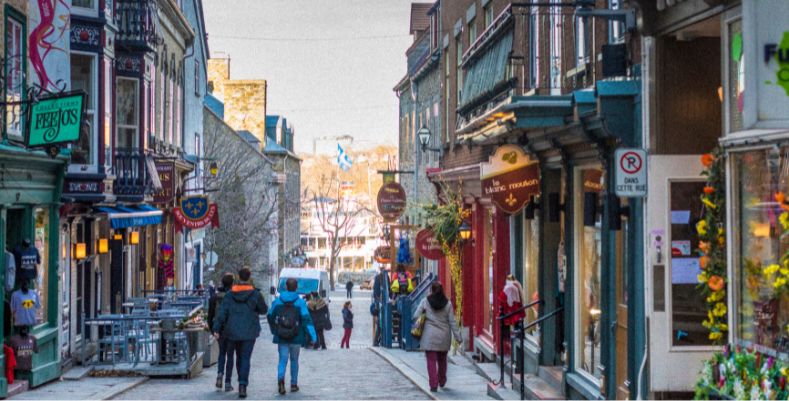
What to eat and drink in Canada: 5 delicacies to try
Canadian cuisine is as diverse as its landscape, offering a variety of flavors and dishes that echo the country's rich tapestry of cultures. Your next vacation could be a culinary journey that takes you from coast to coast, exploring iconic dishes that Canadians call their own.
Here is our list of the top five food and drinks to try when visiting the Great White North:
1. Poutine
Originating from Quebec, this culinary gem is a delightful marriage of crispy chips, rich gravy, and squeaky cheese curds. Savor it at a roadside chip wagon or a chic bistro—it's the country's ultimate comfort food.
2. Butter tarts
A sweet treat not to be missed! These scrumptious tarts are filled with a gooey blend of butter, sugar, and eggs, often studded with raisins or pecans. Perfect for satisfying your sweet tooth.
3. Montreal-style bagels
Smaller, thinner, and sweeter than their New York cousins, these bagels are a must-try. Pair it with Montreal's famous smoked meat for a truly hearty meal.
4. Caesar
Dubbed as Canada's unofficial national cocktail, this tomato-clam based drink is a vibrant mixture of flavors. Served chilled with a celery stalk, it's a perfect sipper for a balmy evening.
5. Icewine
Produced from grapes left to freeze naturally on the vine, this sweet, luxurious wine is a treat for your palate. A visit to Ontario's Niagara Peninsula, the world's leading Icewine producer, is a must for wine lovers.
Most popular Canadian airports to fly into from the U.S.
For those who are planning an adventure in the Great White North, choosing the right airport can make all the difference to your trip.
Here, we have curated a list of Canada’s top airports to fly into from the U.S., which offer top-notch services and facilities and are close to some of the most iconic Canadian destinations.
Toronto Pearson International Airport (YYZ): As Canada's largest and busiest airport, Toronto Pearson offers a multitude of flights, making it an easy choice for U.S. travelers. With a wide range of dining options, shopping areas, and excellent transportation links to downtown Toronto, it's a great starting point for your Canadian adventure.
Vancouver International Airport (YVR): Known for its stunning architecture, indigenous art displays, and exceptional service, Vancouver International is consistently ranked as one of the world's best airports. It's the perfect gateway to the breathtaking beauty of British Columbia.
Calgary International Airport (YYC): If the enchanting landscapes of Alberta are calling your name, make Calgary International your first stop. With its easy access to the Rocky Mountains and Banff National Park, it’s a great choice for an outdoor enthusiast.
Montreal-Pierre Elliot Trudeau International Airport (YUL): For a taste of European charm in Canada, fly to Montreal. The airport is well-connected, offering easy access to the city’s vibrant culture, historic sites, and mouth-watering culinary scene.
Halifax Stanfield International Airport (YHZ): Head to Nova Scotia via the Halifax Stanfield Airport for an authentic Maritime experience. It's the perfect launching point for exploring the rugged coastline, historic lighthouses, and the incredible seafood of Canada’s East Coast.
How to get around in Canada: Best transportation options for smoother travel
Navigating the vast and diverse landscapes of Canada can be an adventure in itself. Fortunately, Canada's transportation system is efficient, reliable, and varied, offering several ways for you to explore the country at your own pace.
Buckle up for a quick guide on how to get around in Canada!
Bicycling: If you're a lover of the great outdoors and eco-friendly travel, why not explore Canada by bicycle? Cities like Vancouver, Victoria, and Montreal are famed for their extensive and well-maintained bike lanes, making pedal power a viable and enjoyable way to get around. Plus, it's a fantastic opportunity to take in the scenic beauty at your own pace.
Public transportation: Whether it's hopping on a bus in Toronto, taking a tram in Edmonton, or boarding a train in Montreal, public transit systems in Canada are comprehensive and efficient. Major cities boast an extensive network of buses, trams, and trains, ensuring you reach your destination quickly and conveniently. Don't forget to grab an electronic transit card for seamless travel!
Taxis and ride apps: Need to get somewhere fast or traveling in a group? Taxis are readily available in all major cities and most towns. You can hail them on the street, or better yet, book one through popular ride-hailing apps like Uber or Lyft. It's a slightly more expensive option, but offers the benefit of comfort, speed, and door-to-door service.
Where to stay in Canada: Top neighborhoods for tourists visiting Canada
When planning your dream Canadian getaway, the location of your accommodation can greatly influence your experience, so it pays to do your research.
Whether you're looking for the hustle and bustle of city life, the charm of historic architecture, or the allure of vibrant arts and food scenes, Canada's diverse neighborhoods have you covered.
From the vibrant streets of Toronto's Kensington Market to the quaint, historic charm of Quebec's Old Port, here's a roundup of the top 10 Canadian neighborhoods to make your home away from home during your visit.
Kensington Market, Toronto
A multicultural melting pot, Kensington Market is an eclectic neighborhood known for its vibrant street art, indie shops, and a plethora of cuisines from around the world. It's a foodie's paradise!
Old Port, Quebec City
Steeped in history, Old Port is a picturesque neighborhood with narrow cobblestone streets, historic buildings, and charming bistros. It's like stepping back in time.
The ByWard Market, Ottawa
One of Canada's oldest and largest public markets, this area offers a mix of shopping, dining, arts, and entertainment options. Don't forget to try the famous BeaverTails pastry!
Yaletown, Vancouver
Once a heavy industrial area, Yaletown has transformed into a hip, upscale neighborhood, filled with boutique shops, trendy restaurants, and beautiful waterfront parks.
The North End, Halifax
Known for its vibrant arts scene, unique boutiques, and delicious eateries, the North End is a must-visit for travelers looking to be immersed in Canadian culture.
The Plateau, Montreal
Known for its bohemian vibe, the Plateau is filled with colorful Victorian houses, trendy eateries, chic boutiques, and some of Montreal's best bagel shops.
Inglewood, Calgary
Calgary's oldest neighborhood, Inglewood, is full of character with its historic buildings, indie boutiques, art galleries, and pubs with live music.
The Forks, Winnipeg
This historic site at the junction of the Red and Assiniboine rivers has been a meeting place for over 6,000 years. Today, it's a bustling hub of food, shopping, and entertainment.
Old Strathcona, Edmonton
The city's theatre district, Old Strathcona, is packed with independent shops, restaurants, and vibrant nightlife, making it a fun place to stay.
James Bay, Victoria
With its charming Victorian houses, beautiful parks, and scenic coastline, James Bay is one of Victoria's most appealing neighborhoods.
Jellybean Row, St. John's
This quaint neighborhood is filled with vibrant houses that tell tales of heritage and blend seamlessly with over 1,000 years of exploration led by Vikings at L'Anse aux Meadows.
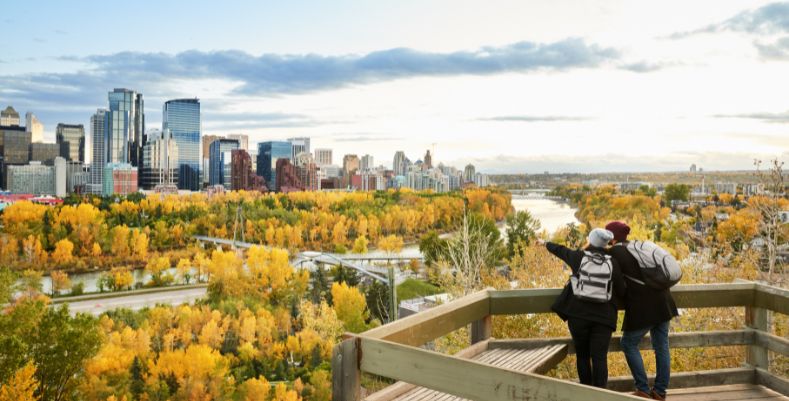
Essential items to pack for your Canadian vacation
If you're reading this, you now know the best time to visit and what to do in Canada, which means you're one step closer to setting foot in the magnificent landscapes of the Great White North! After booking your trip from the U.S. to Canada, the next important step is planning what you need to pack, and we're here to make sure you have all the essentials in your suitcase.
Remember, packing right sets the tone for a stress-free and enjoyable trip. As you check off these items, you’ll almost be able to feel the excitement of stepping off the plane or out of your car and ready to jump into your Canadian adventure.
So, let's dive into our list of must-pack items for your Canadian adventure.
Passport and identification
Remember, even though Canada is our friendly neighbor, you'll still need a valid passport or equivalent travel document to cross the border. Keep these documents handy and safe.
Weather-appropriate clothing
Given Canada's diverse climate, packing layers is key. Bring a sturdy pair of walking shoes, a waterproof jacket, and don't forget your swimsuit for those beautiful Canadian lakes and hot springs.
Toiletries
While most Canadian accommodations will provide basic toiletries, it's a good idea to bring travel-sized versions of your favorites. And don't forget your SPF – the Canadian sun can be surprisingly strong, especially in the mountains!
Camera
From the sweeping vistas of the Rocky Mountains to the charming streets of Quebec City, there are countless photo ops. Pack a camera to capture these wonderful moments.
Power adapters
Canada uses Type A or Type B plugs (like the U.S.), so you shouldn’t need an adapter to charge your devices if you're coming from the U.S., but it’s smart to check just in case.
Health essentials
Pack a basic first aid kit, prescription medicines, and any other necessary health items. Although Canada has excellent healthcare facilities, it's always best to be prepared.
Snacks
Though Canada is known for its delicious cuisines, packing some of your favorite snacks will keep hunger at bay during those long explorations.
Reusable water bottle
Staying hydrated during your trip is essential, and it's also a greener choice. There are plenty of public water fountains where you can refill your bottle.
Map and guidebook
While digital maps are great, having a physical map or guidebook as a backup can be a lifesaver in areas with poor signal.
Travel insurance
No matter which places or events in our Canada travel guide you choose to visit or attend, it’s always wise to consider protecting your trip with travel insurance. After all, you never know when you’ll need financial support or emergency assistance!
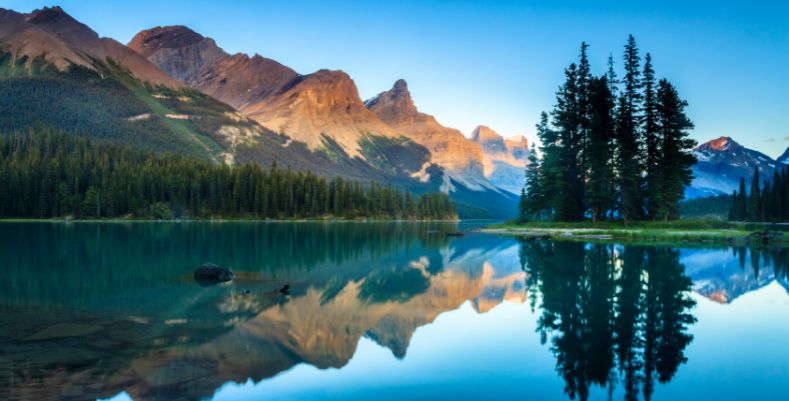
8 French words and phrases to know when visiting Canada
Although English is widely spoken, Canada is proudly bilingual, with French as the official language in the province of Quebec.
So, why not add a splash of “joie de vivre” to your trip by learning some local French words and phrases? Doing so can make your journey even richer, and the locals will absolutely love it!
Here are our top eight to get you started:
1. Bonjour (Hello): Use this to greet people any time before evening. People will appreciate your effort, and it's an excellent way to start any interaction on a good note.
2. Merci (Thank you): It's always polite to express gratitude when someone helps you out or gives you directions. A little “Merci” can go a long way!
3. Excusez-moi (Excuse me): Need to catch someone's attention or apologize? This can be your go-to phrase. It's particularly useful in crowded places or when navigating busy city streets.
4. Où est...? (Where is...?): This phrase is essential when asking for directions. Just add the place you're looking for at the end of the question, like “Où est le musée?” when looking for a museum.
5. S'il vous plaît (Please): This is a vital tool in your linguistic arsenal. Whether you're ordering poutine or asking for guidance, don't forget to say “S'il vous plaît.”
6. Combien ça coûte? (How much does it cost?): Hitting the shops during your trip to Canada? This phrase will be invaluable when you're bargaining or simply buying souvenirs.
7. Parlez-vous anglais? (Do you speak English?): If you're struggling with your French, ask this phrase first. Many Canadians are bilingual and will gladly switch to English to help you out.
8. Au revoir (Goodbye/See you later): This phrase is a friendly way to end a conversation or bid farewell to your newfound Canadian friends in Quebec province or beyond.
Public holidays to keep in mind when planning your Canada trip
Before packing your bags, don't forget to consider Canada's public holidays. These special days might just add that extra flair of culture and fun to your trip, or, depending on your plans, require a bit more scheduling. So, whether you wish to join the cultural festivities or steer clear of the holiday hustle and bustle, knowing Canada's public holidays puts you in control of your adventure.
Here are some of the most well-known public holidays to consider when deciding on the best time to travel to Canada for you and your loved ones:
New Year's Day: January 1
As with the U.S., Canada rings in the New Year with much fanfare. Expect fun-filled parties, dazzling fireworks, and cheerful celebrations on the eve of the New Year.
Good Friday and Easter Monday: March/April
Expect some closures on these Christian observance days. If you’re visiting at this time, don't miss the Easter parades, though; they're egg-straordinary!
Victoria Day: Monday on or before May 24
This holiday, also known as 'May Two-Four', celebrates Queen Victoria's birthday. It's considered the unofficial start of summer, so expect fireworks, parades, and plenty of outdoor activities!
Canada Day: July 1
Think Independence Day, but Canadian style! This nationwide celebration of Canada's birthday includes parades, fireworks, barbecues, and live concerts.
Labour Day: First Monday in September
Similar to the USA, Canada celebrates this holiday that honors workers. It's the unofficial end of summer, so expect lively street fairs and parades.
Thanksgiving: Second Monday in October
Yes, Canadians celebrate Thanksgiving too, but in October! It's a day to give thanks with a feast typically involving turkey, stuffing, and a whole lot of pie!
Remembrance Day: November 11
Akin to Veterans Day in the U.S., this is a solemn day to honor the fallen. You'll witness ceremonies at war memorials, cenotaphs, and military graves.
Christmas Day: December 25
Just like home, Canada gets into the festive spirit with dazzling lights, holiday markets, and joyful celebrations.
Ready to feel more protected while in Canada?
Discover how our travel insurance plans can help safeguard your trip across the northern border and get a quote now.



